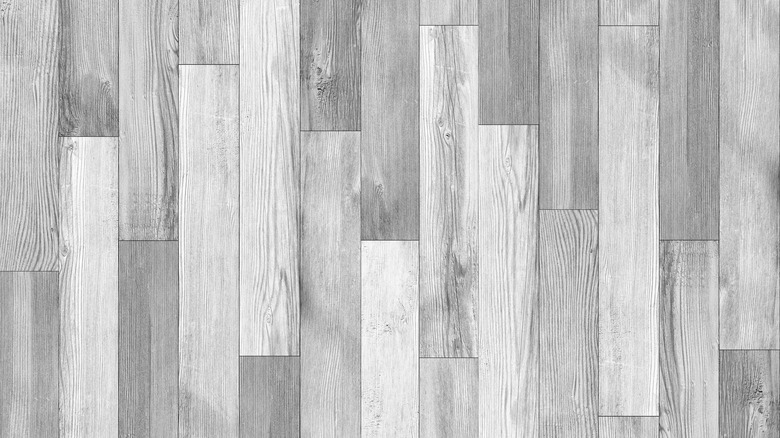Why You Should Actually Paint Your Hardwood Floors
Many designers and home builders will shy firmly away from the use of paint on newly laid (or existing) hardwood flooring. Paint on wood and painted brick fundamentally change the tactile and visual aesthetic of a feature in your home. Not only that, paint can sometimes be applied as a permanent coating on the surface, meaning you might be making an irrevocable design choice when taking brush to medium.
Still, there are actually some good reasons to paint your hardwood floors. This type of flooring factors heavily into the zeitgeist of American homeownership; Builder Online notes that when surveyed, two-thirds of homeowners would choose hardwood floors for their dream house. But hardwood is often dark and places a stranglehold on the decorating potential of a room. Areas that make use of hardwood flooring are confined to rustic decorating temperatures and typically bring in lots of tertiary wood grain to round out the atmosphere of the space.
It can be tough to match modern fixtures or polished metals (as opposed to darker, iron styles) with an already dark room tone. However, using the painting technique can bring about a stylistic sea change in your home that allows for creativity and experimentation when it comes to finalizing design features across the space. Painting your floors offers a window into customization and change that simply doesn't exist with the natural color and visual realities of a luxurious yet dense hardwood flooring element.
Painting your floors actually follows in a storied tradition
Believe it or not, the drive to paint your floors is rooted not in a modern desire to customize the home but in European and American traditions. The Swedish Furniture reports that Swedish homes made heavy use of white or light-colored wood floors as early as the 17th century. This allowed homeowners to defeat the punishing dreariness of short and cold winter days. The Washington Post also reports that Swedish designers typically worked with their paints to mimic the luxurious style of Italian marble floors through their application.
For an entirely different reason, American homeowners often took to the paint can to solidify the flooring in their homes during the 19th century. This was done in an act of preservation that transformed quickly into style adaptation as well. Pines are found in abundance in the Americas, especially in mountainous regions of the northern hemisphere (via NASA Earth Observatory), and were used as a building resource across the United States. Yet, pine is a particularly soft wood, making it vulnerable to moisture and the eventual onset of rot, which would assuredly render a home useless if given enough time. Paint was used as a type of sealant to protect the home from the elements, and eventually, floor painters began incorporating unique stylistic textures that mimicked the look of wool or silk woven carpets that might be found in a European household.
Painted floors provide durability and personalization
Durability is one key feature of the floor painting strategy, to be sure. The Washington Post notes that painting your hardwood floors takes multiple coats and significant time between layers to provide for adequate curing of each new addition. The end result takes weeks of effort from the time you remove all of your furniture from the room before arriving at a finished product, but will deliver a significantly hardened surface. It's certainly possible to scratch the painted surface still, but with the added protection of a polyurethane sealant on top, you're unlikely to destroy the flooring without a serious effort!
What's perhaps the most intriguing thing about a painted hardwood floor is the depth of personalization that's possible. You could opt for a flat coat of white paint or any other color that suits your style or a room's overall color design. Or, you can choose to incorporate design elements embedded within the painting project — in the same way that Scandinavians and Americans did in earlier times. The Washington Post reports that a checkerboard pattern is a favorite among homeowners looking to make this change as a DIY project. However, the outlet notes that it's important to run this pattern into and underneath your floorboards rather than out to a painted border. This will keep the room feeling light and large.


